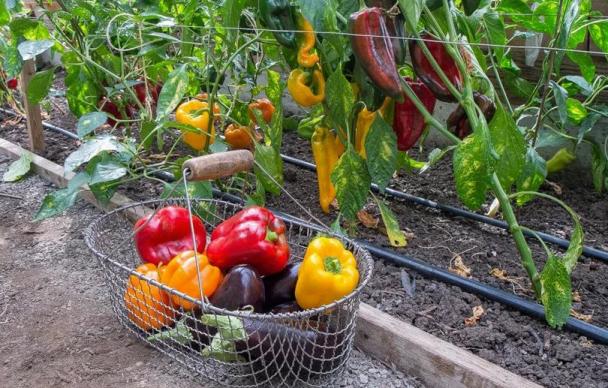
The harsh climate of Siberia has long been known. Many people think that in that region it is only possible to buy products, that there can’t be any talk about their own planting, or that it is necessary to build heated capital greenhouses to grow vegetables and fruits. This is not true. And in Siberia, you can quite successfully breed many vegetables, including everyone's favorite pepper. You just need to choose the right varieties. This is what the article is about. You will find out which variety is best suited for which conditions, as well as get acquainted with the conditions for a generous harvest.
Content
Varieties for greenhouses of Siberia
Peppers can be grown outdoors in Siberia, but still most residents prefer greenhouses and greenhouses. So really reliable. But the variety also matters. Consider the most popular.
Hercules
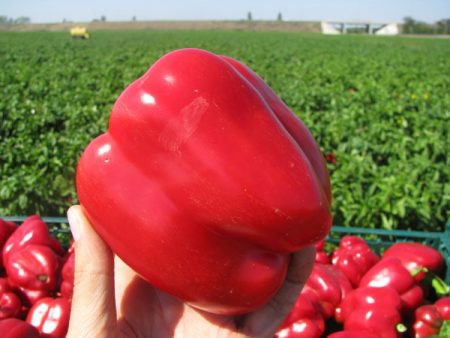
As the name implies, the variety is distinguished by strength and power. The mid-season plant is quite high, so you can’t do without supports. The fruits are also quite large. The average weight of one is 300 grams. The color of the pepper is red, the walls are thick, the skin is dense.
Hercules can be grown both in the greenhouse and in the open ground. It is characterized by increased resistance to disease, is not afraid of pests, and tolerates weather extremes.
Gardeners value the ability of the variety to be stored for a long time and withstand transportation over long distances. Often grown for sale. In cooking, the application is universal.
Red Bull
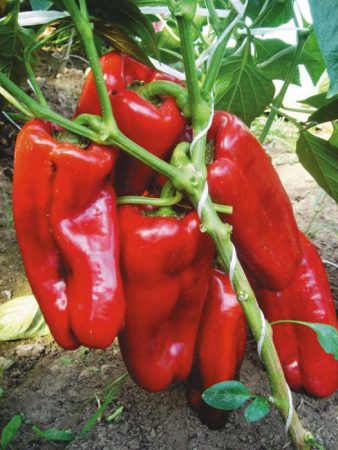
This midrange hybrid was developed specifically for cultivation in harsh Siberian conditions. It can be planted both in a greenhouse and in open ground. The variety is characterized by increased productivity. At an average height, it requires obligatory garter, because there are a lot of fruits on the bush, it just can not stand them. The undoubted advantage is the large number of ovaries, even with insufficient lighting, but if there is too much nitrogen in the soil, they can sprinkle.
Fruits change color from green to red as they ripen. The pulp is sweet, juicy, wall thickness up to a centimeter.
Denis
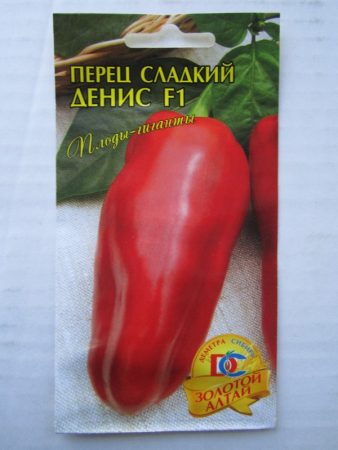
The variety allows you to harvest after about 95-100 days after the appearance of the first seedlings. This is very rare for Siberia, so early ripe pepper in this region is quite popular. Moreover, it has no special requirements for growing conditions.
Bushes of medium height, about 70 cm, but need to be tied up due to very large fruits. On average, the weight of one reaches 350-400 gr. You can grow only in the greenhouse. Most often used fresh, but also suitable for preservation and freezing.
Latinos
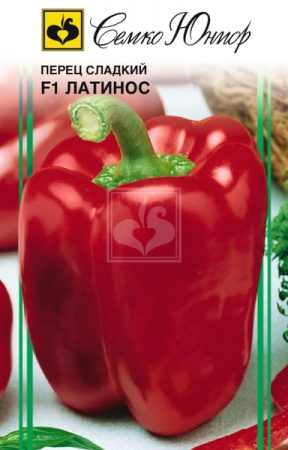
Pretty attractive outwardly bell pepper. On high (up to a meter, and sometimes even higher) bushes, a large number of fruits are located, which, as they ripen, change color from green to red.
This variety is early ripe. You can taste the pepper after 105-110 days after the appearance of the first shoots.With a meter of kV, up to 14-15 kg of crop yield, so “Latinos” is quite popular and is often grown not only for its own needs, but also for sale.
The weight of the fetus in a state of technical freshness is up to 120 g, in biological - up to 250-300 g. The taste is sweet with a pleasant aftertaste.
Grenada
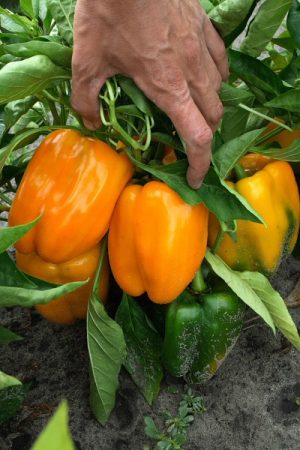
An early hybrid is designed for growing in a greenhouse. It refers to self-pollinated, which guarantees 100% yield.
The bush is of medium height, but sometimes it can grow up to a meter, so it is better to think over props and methods of tying in advance. The fruits are quite large, the flesh is juicy, the walls are up to 7 mm thick. In a state of technical ripeness, it has a green color, with ripening it becomes yellow first and then orange
It can be used in any recipes.
Casablanca
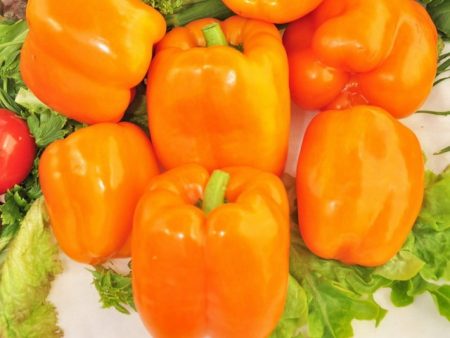
One of the earliest varieties of pepper intended for cultivation in Siberia. Harvesting is possible already after 90-95 days after the appearance of the first seedlings.
As they mature, the skin color changes from light salad to saturated orange. Peppers and plucked from the bush “reach” the biological ripeness. So you can collect them as soon as technical maturity is reached to enable others to get enough nutrients and vitality.
Peppers of this variety are very large in size. Even for the preparation of a large portion of a salad of fresh vegetables, one fruit is enough.
The pulp is juicy, sweet. The walls are thick up to 8 mm.
Flamenco
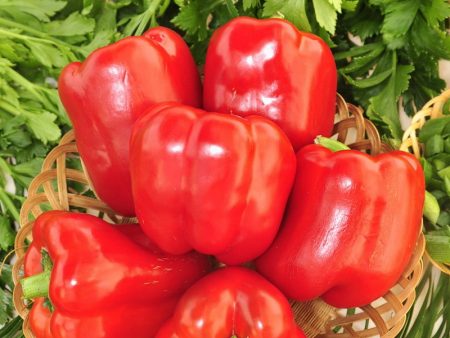
Another early ripe hybrid, bred specifically for harsh climates. The fruits are large. Color changes from light yellow to deep red. Wall thickness up to 8 mm. The pulp is juicy, sweetish. The aroma becomes more saturated at the time of biological ripeness.
Pepper is well stored, easily transfers transportation over long distances. In cooking, use is universal.
Yellow bull
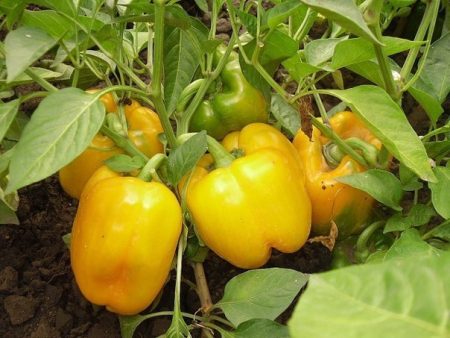
This mid-early hybrid has a very attractive appearance. The color changes as it ripens from juicy green to bright yellow.
Fruits have the shape of a cone, with a pointed apex. Wall thickness up to a centimeter. The pulp is juicy, has a rich taste and pronounced aroma. The undoubted advantage is the ability to form ovaries and give a good harvest, even under the most adverse conditions.
After picking, peppers can be stored for quite some time. Moreover, the appearance does not change and does not affect the taste either. Therefore, the variety is often grown for sale.
Cardinal
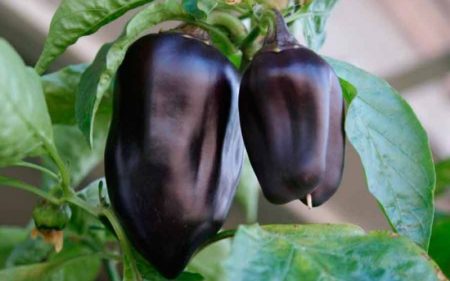
This early ripe hybrid is quite moody. It is grown exclusively in the greenhouse, it requires nutritious soil, regular top dressing, and adequate lighting. Tall bushes (up to a meter) need to be tied.
The fruits are quite large, the flesh is very juicy, the walls are thick, up to 8 mm. Color changes as it ripens from green to saturated violet.
The application in cooking is universal.
Claudio
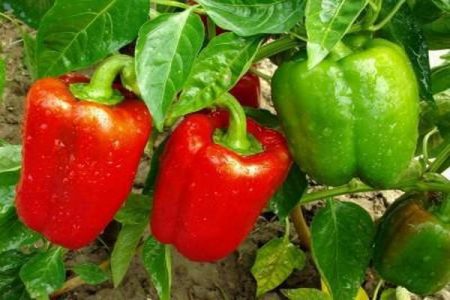
This variety of pepper belongs to mid-season Dutch hybrids. Harvesting is possible after 115-120 days after the appearance of the first seedlings.
The height of the bush is approximately 1.3-1.5 m. Reliable supports are needed. The fruits weigh approximately 250-280 gr. By the time of ripening blush.
It is characterized by increased resistance to diseases and pests.
The taste has a rich, pronounced aroma. It can be used for cooking fresh dishes, preservation and freezing.
Atlant
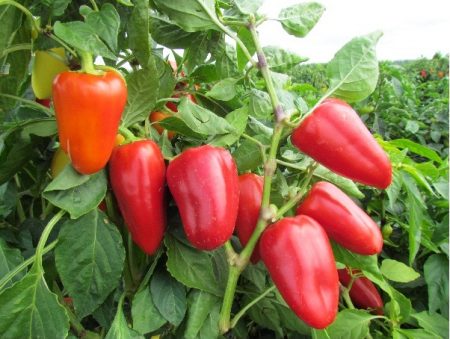
One of the best mid-ripening varieties bred for cultivation in the regions of Siberia, but not grown for industrial purposes, because the yield is average. But the taste of the fruit is simply amazing. And most importantly, even in canned and frozen form, the aroma and taste does not lose.
The bush reaches a height of about 75-80 cm. Fruits can be harvested 110-115 days after the appearance of the first seedlings. The color changes as it ripens from green to bright red.
Cockatoo
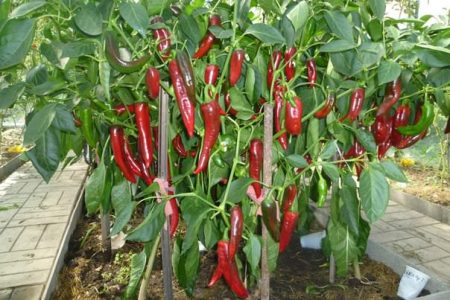
This hybrid got its name for its amazing color at the time of biological ripeness.Bright orange fruits can sometimes also have red walls, “sunbathing” from direct sunlight.
The bushes are very tall, not less than 1.5 meters in height. The branches are spreading, they occupy quite a lot of area, so it is not worthwhile to frequent seedlings during planting.
Harvesting is carried out 110 days after the appearance of the first seedlings. Fruits reach a weight of 450-500 gr. They have a sweet juicy flesh and a rich aroma, have a long finish.
Orange bull
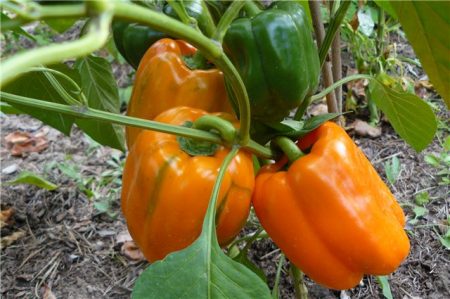
An early ripe hybrid is suitable for growing in open and closed ground, but still gives the best yield indicators in a greenhouse.
The variety is resistant to disease, is not afraid of pests, tolerates temperature changes, does not suffer from insufficient lighting. In a state of technical ripeness it has a green color, in a biological one - bright orange.
The fruits are very tasty, sweet, juicy. They can be used for any recipes, but are best suited for stuffing and preservation.
The best varieties of peppers for greenhouses in Siberia
Northern regions may have different climates. The grades listed above give a good result, but for those who want to be 100% sure of it, we advise you to pay attention to the following.
Belozerka
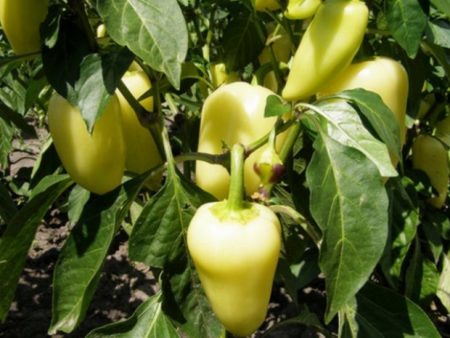
The mid-early variety allows you to get the crop after 110-115 days after the appearance of the first seedlings. The culture is standard. Bushes are low. The maximum height is 65-70 cm. The fruits have a conical shape, the weight of one is approximately 100 g. The pulp is juicy, wall thickness up to 7 mm. The fruits ripen together. About the biological ripeness says the bright red color of the peel.
From an meter of kV, an average of 8 kg of pepper is collected. The variety is distinguished by increased immunity, resistance to rot, fungi and pests. An undoubted advantage is long fruiting, but only if there is sufficient lighting.
Pepper "Belozerka" is sweet, has a rich aroma that retains even when frozen and preserved. The variety is distinguished by the ability to carry transportation over long distances and is very well stored.
Korenovsky
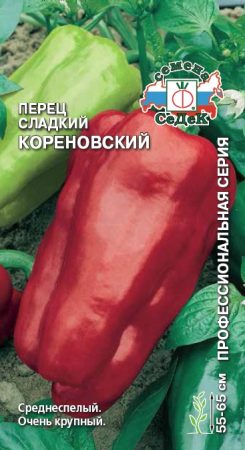
The mid-early hybrid was bred for growing in a greenhouse. He needs a stable temperature and adequate lighting.
Bushes are powerful semi-spreading, up to 65-70 cm high. The leaves are rather large, saturated green. If they begin to turn pale, then there is not enough light.
Harvesting is possible after 115-120 days after the appearance of the first seedlings. The fruits are cone-shaped, rather large, weighing up to 165 grams. The pulp is very juicy. The average wall thickness is approximately 4.5 mm.
In a state of technical ripeness they have a salad color, they are blushing by the time of the biological one. The taste is saturated, the aroma is pronounced. The variety is resistant to diseases and pests, well stored.
About 4 kg of crop is harvested from a meter of kV. But there is a drawback. Seeds, even purchased from the most trusted suppliers, have a very low germination rate, and in poor soil you can not even try to grow them.
Triton
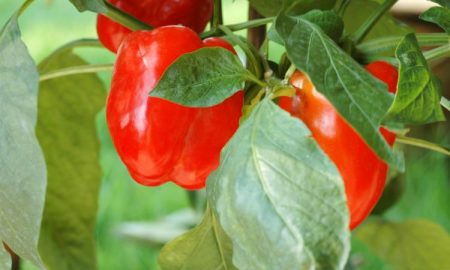
An early ripe variety yields a crop approximately 90 days after the appearance of the first seedlings. The bush is of medium height, up to 60 cm. It has a characteristic difference - a kind of dome of leaves in the form of an umbrella. It is characterized by increased productivity. About 50 fruits weighing about 150 grams are harvested from one bush, and up to 10 kg from a meter of kV.
The pepper is cone-shaped, sweet, the pulp is juicy, the wall thickness is average, about 5-6 mm. Ripe peppers are light yellow, and if I continue to ripen, they will acquire a rich red color. It was bred for canning and freezing, but it may well be used fresh.
The variety is unpretentious to the characteristics of cultivation, has increased immunity.
Merchant
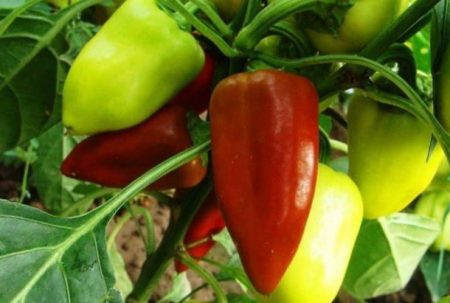
One of the earliest varieties of pepper, intended for cultivation in the harsh northern climate. The first fruits are harvested already 90 days after the appearance of the first shoots. The bush is powerful, sprawling, up to 80 cm high. The fruits are small. Each weight is not more than 70 grams, but at the same time they have rather thick walls - up to 7 mm, very juicy pulp and amazing aroma.
The ripened fruits are green, but they turn red to biological ripeness. They are high in vitamin C and sugar.
About 2.5 kg of pepper is collected from a meter of kV. For normal development and full fruiting, it is necessary to ensure a sufficient amount of oxygen to the roots. Only loosening should be carried out very carefully so as not to damage the already sensitive root system.
How to sow pepper seeds in Siberia?
Growing pepper is not an easy task in regions with a stable warm climate, but in the harsh conditions of Siberia, making it more difficult. But do not give up too early. Just a little effort and a harvest of fresh wholesome vegetables will be your best reward.
Drop off time
Seedling time for seedlings is of great importance. Do not think that the difference in a few days is insignificant. On the planting period, it largely depends on what the seedlings will be when they appear, the power of seedlings, the time of appearance of the color and the number of fruits.
Planting time depends on the following factors:
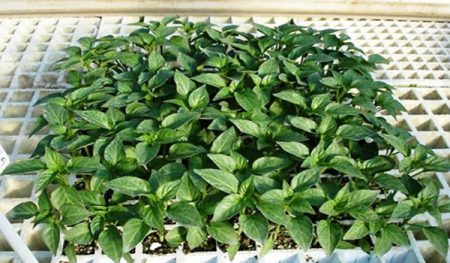
- The place of growing pepper. The transfer of adult seedlings to the soil, greenhouse or greenhouse occurs at different times. When choosing an open bed, it is necessary that a stable air temperature is established - at least 20-22 in the afternoon, and for closed ones the level of soil heating is much more important. If the soil has a temperature below 15 degrees, the seedlings will simply die. A planting must occur before flowering. Thus, for a greenhouse, seeds begin to germinate two weeks earlier than for open beds.
- The ripening period of pepper. Early varieties yield 95-100 days after emergence.
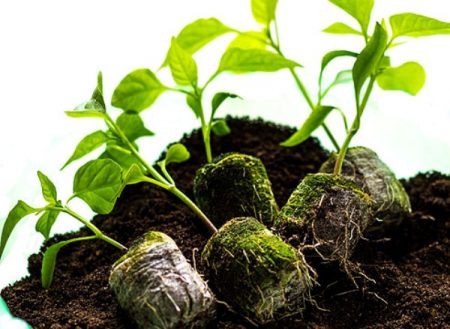
Mid-season allow harvesting after 110-125 days, and later - after 130-150 days. But we are talking about the moment of technical ripeness. Many varieties to achieve the fruits of biological ripeness require an additional stay on the bush from 10 to 20 days. Although some ripen and ripped off.
Seed preparation
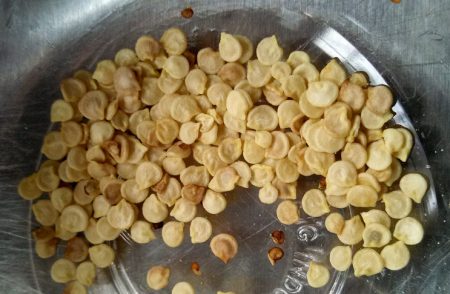
To obtain good seedlings, it is necessary to carry out preliminary work with the seeds, correctly select the soil mixture and containers for seedlings. Self-collected seeds can only be planted in the second, or better, in the third year after collection and they should not be obtained from hybrids. Those bought at the store have already been kept to the required time, so it is advisable that they be of the same year of production as the landing. If they are more than 2-3 years old, half may not rise at all.
Seeds must be sorted, selecting damaged ones. Then dissolve a spoonful of salt in a glass of water, mix and lower the seeds. After a few minutes, part will sink to the bottom, and some will float to the surface. You can safely throw out the last. These are either dummies or weak seeds, which it makes no sense to plant at all.
Then the seeds need to be processed in a medium solution of potassium permanganate. They can be wrapped in gauze and immersed in a rich pink solution for 20-30 minutes.
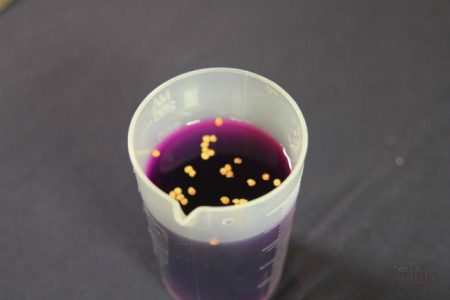
Then, in the same gauze, the seeds can be left for germination. It is necessary that they do not touch each other. For faster germination, the container with gauze and seeds can be covered with film or glass. It is necessary to ensure that the seed germ does not exceed 1 mm.If it is larger, landing is possible damage.
For the Siberian harvest, it will not hurt to carry out not only seed treatment from pests, but also harden them. To do this, wrap them in a damp cloth and put them in the refrigerator for two days. After 12 hours, keep warm and again put in the refrigerator for two days.
Soil preparation
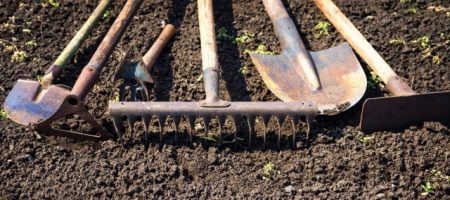
Pepper is very demanding on the composition of the soil, but in addition to the nutrient content in the soil, its friability is important. You can buy ready-made soil, or you can make it yourself. For this, two parts of humus and compost are mixed, one part of river sand is added. If there is no sand, you can replace it with wood ash.
Shop soil in most cases undergoes treatment from parasites and pests, but a mixture made independently requires the obligatory carrying out of this procedure. The most optimal way is to calcine the earth in a water bath. You can also pour hot solution of potassium permanganate, add onion husk to the mixture.
But remember that larvae and fungi can be found not only in the soil, but also on the surface of pots for seedlings, tools, etc. So they also need disinfection.
Seeding for seedlings
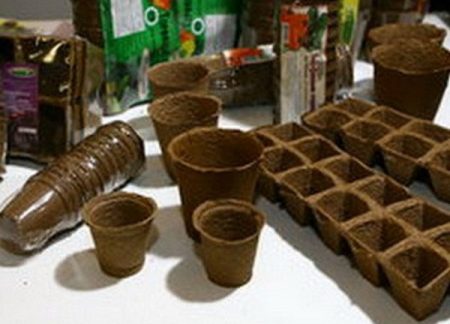
All varieties of pepper have a weak root system, and the slightest damage to it leads to the death of the whole plant. Therefore, for several years in a row, all gardeners have been advised to plant seeds for seedlings not in a common capacity, but in separate pots. Their volume should be at least 0.5 liters and have a height of at least 11 cm.
It is very convenient to use peat tablets and pots for growing pepper seedlings. This is immediately a container and fertilizer, and you should not worry about moving the soil. Plants are buried in the hole immediately with them and the root system is not damaged.
Submerge the seeds in the soil no deeper than 3 mm and make sure that the seedlings point straight up.
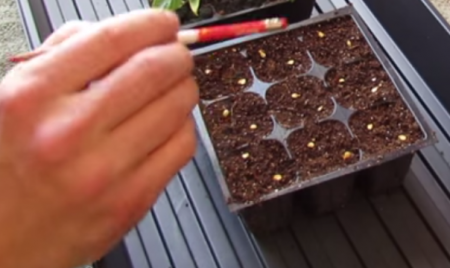
The temperature of the soil should be at least 25 degrees, it must first be moistened. After the container is covered with film or glass and placed in a warm place until germination. If the temperature is + 25-30, they will appear in a week, if about +20 - in 10-14 days, if below +18, then not earlier than in 3 weeks, or even in a month, and at + 13-14 stop development and do not emerge at all.
One of the main problems in growing seedlings is over-sprouting. This happens if there is not enough light. Remember that normally a flower should form after 9 leaves. If it is not there, and the leaves continue to form, then it is urgent to provide additional illumination. On average, a daylight lamp should burn daily for 15-16 hours.
Water the sprouts with warm water. Rotate the containers regularly so that the seedlings do not lean in one direction.
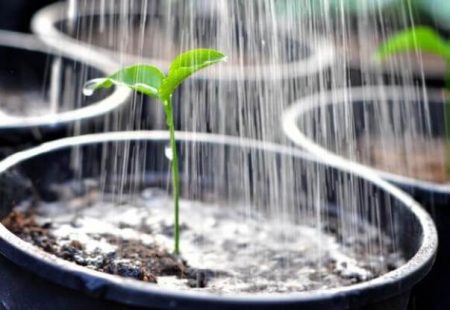
After the first two leaves appear, you can feed. For this, you can use ready-made store preparations or alternative methods.
About 10-14 days before transplanting to a permanent place, you need to do hardening seedlings. This is especially important for varieties intended for open ground. To do this, containers of pepper are taken out daily, gradually increasing the time spent there. On the last day, you can try to leave at night, only you need to provide reliable shelter. It will also be needed in the first week after moving to the ground.
Transfer
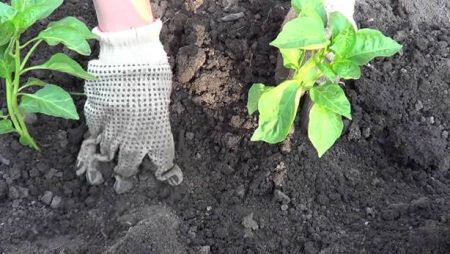
The pepper bed should be placed on a well-lit area. It should have a normal air supply, but drafts are unacceptable. Transplantation is carried out when the first buds appear on seedlings. The average distance between the holes is 50 cm, but it all depends on the variety. Sometimes plants are recommended to be placed at a distance of a meter or more from each other.
The hole should be wide so that the root system is comfortable. The sprout should be instilled a little deeper than it was in the pot.Previously, in each well it will not hurt to introduce mineral fertilizer, just make sure that there is no chlorine in the composition.
Approximately 5-7 days, watering is not carried out. Then it is carried out every 2-3 days, if there is no strong heat. It is important to do this only with warm, previously standing water and only under the root.
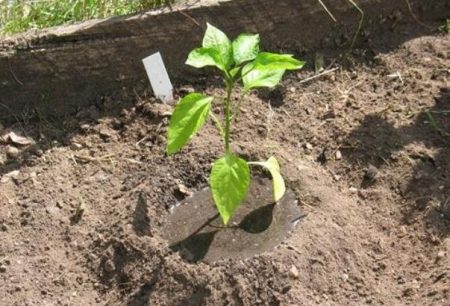
Do not forget to regularly loosen the soil. A sufficient amount of moisture and oxygen must flow to the roots.
These are the main recommendations for growing varieties in Siberia, but each species has its own characteristics, so be sure to study them.
New Siberian varieties
The first positive results of pepper cultivation in Siberian regions inspired breeders to create new varieties. Consider the most popular of them.
Dandy
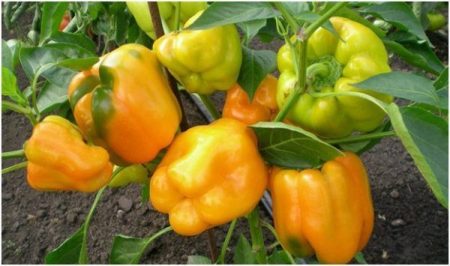
This early ripe variety was bred in Western Siberia. The plant is not tall. The bush grows to no more than 50 cm. The shape resembles a barrel, the weight of the fruit is 180-200 g. In technical ripeness, peppercorns are light green, in biological - rich yellow. Appearance is quite attractive, keeping quality is good, resistant to transportation over long distances, therefore it is often grown for sale.
Fat toss
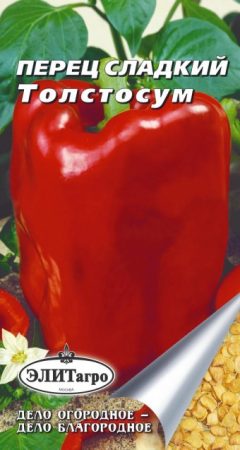
The variety quickly established itself on the positive side. It can be grown in greenhouses and in open beds. Resistant to weather changes, not afraid of cold weather, or excessive humidity, or heat.
The bush is low, up to 60 cm, but quite spreading and powerful, needs a garter.
The fruits are in the shape of a cone. At least 15 ovaries form on one bush. Pepper is bright red, weighs up to 250 gr. From a meter of kV, up to 5 kg of crop is harvested.
Sweet chocolate
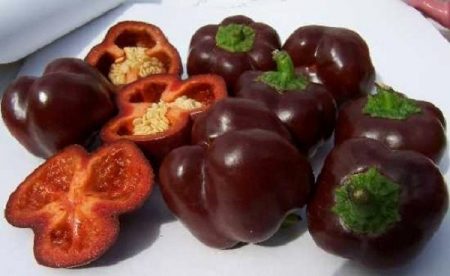
This mid-early variety got its name for its unusual color. But the most interesting thing is that under the brown skin hides a juicy flesh of a rich red color. The height of the bush is about 80 cm. The taste is sweet with a small bitterness, the aroma is very saturated.
It can be grown both in greenhouses and in open ground.
Golden Taurus
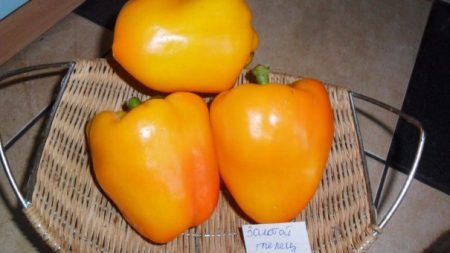
This mid-early variety was bred specifically for Siberia. The height of the bush is about 75 cm, the fruits are yellow, large, can weigh up to half a kilogram. The pulp is sweet juicy. From one bush collect up to 15 fruits. The application in cooking is universal.
Harvest varieties with delicious fruits
For those who are engaged in growing garden crops not for sale, but for their family, not only increased productivity and unpretentiousness, but also taste is of great importance. Interested in such varieties of pepper? Then you will be satisfied with the following.
Siberian prince
Early ripening variety allows you to get a crop after 100-110 days after the appearance of the first seedlings. It can be grown in open ground or under the film. The bush is tall, powerful with spreading branches. Fruits of conical shape weigh 150 g, have an average wall thickness of not more than 5 mm. First, yellow-green, as they mature, become bright red.
From a meter of kV receive 4.5-5 kg of the crop. It has a wonderful taste and rich aroma. The use in cooking is universal, but is most often used for stuffing due to the shape of the fruit.
Siberian format
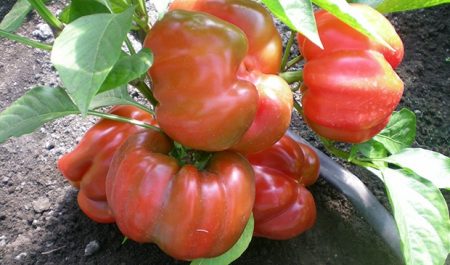
Mid-early hybrid has a high yield. From one bush collect up to 3.5 kg of fruit. Cube shaped pepper. Color changes from green to red. The weight of one is up to 450 gr. There are copies and more than 600 gr, but this is only in the greenhouse.
Planting should be approximately 5-7 plants per meter kV. She loves moisture and fertile soil, so we must not forget about the timely application of fertilizing.
Siberian felt boots
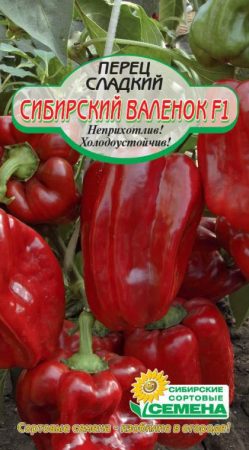
Mid-early hybrid can grow in open ground and in a greenhouse. Bushes up to 60 cm high. Fruits of average size, weigh up to 200 gr. They have a very juicy pulp with a rich taste and aroma. Wall thickness 9 mm. The application in cooking is universal.
The variety is resistant to changing environmental conditions. Gives a good harvest even in low light and with cold weather.
East market
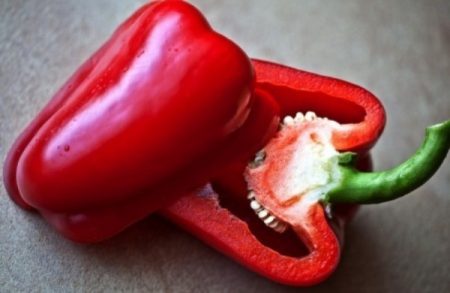
Mid-early hybrid is characterized by high productivity. Bushes of medium height, quite compact. Fruits in technical ripeness are green, then turn yellow and blush. The taste depends on the color. Green peppers are sweet, yellow more fragrant, and red peppers acquire a light speck and have a long finish.
Siberian bonus
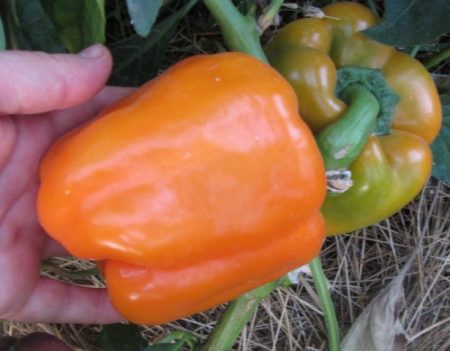
The mid-early hybrid has average yields. Can grow in both open and closed ground. The weight of one fruit is about 100 g. Peppers are very beautiful, golden-orange in color. The use in cooking is universal, but because of its shape it is most often used for stuffing.
Tusk
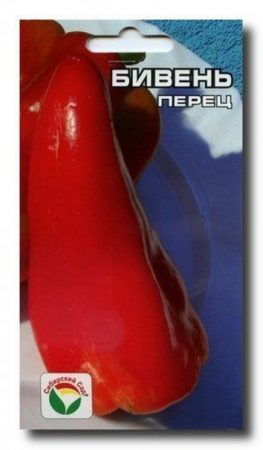
Early ripe hybrid gives an excellent harvest. But he needs reliable props. The bush grows to 1.5 meters, and in addition it has sprawling branches.
Fruits are green at first, then become saturated red. The weight of one is 150 grams, juicy, fleshy. The taste is excellent, the aroma is pronounced.
The best ripening varieties
For cultivation in Siberia, it is recommended to use varieties of early and medium early pepper. Later ones may simply not have time to ripen due to the short summer.
Peppers early ripening
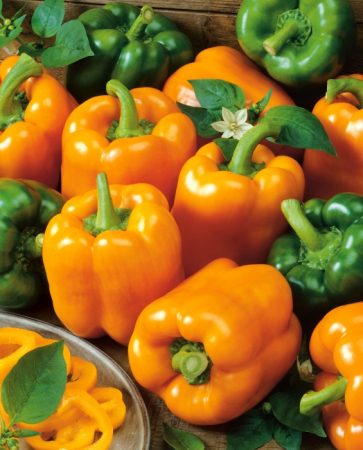
Early varieties allow you to harvest 90-100 days after the appearance of the first seedlings. They can produce fruits over a different period. Some mature together, and some bear fruit for quite some time. Be sure to ensure that the plant receives a sufficient amount of heat, light and moisture. Most of the varieties listed below are for greenhouse cultivation. Here are the most popular:
- Orange miracle. Harvest of pepper can be harvested already 100 days after emergence of seedlings. The bush is of medium height, approximately 80 cm. But props are necessary. Productivity is increased. One fruit weighs about 250 grams and on the bush there are at least 10, and with sufficient care up to 15. The color of the pepper is bright orange. The pulp is saturated, juicy. Walls 10 mm thick. The use in cooking is universal.
- Gingerbread Man. The name received for the original form. At the time of technical ripeness, green, then blush. A distinctive feature - peppercorns grow up. Fruits are small up to 120 g, tasty and juicy, a bush of medium height.
- Topolin. The fruit weighs about 150 g, a bush of medium height, has sprawling branches. Fruits even with a deficiency of nutrients in the soil, inadequate lighting and temperature extremes.
- One. This variety is recommended for cultivation by novice gardeners. Differs in special unpretentiousness to environmental conditions and soil composition. Fruits up to 200 gr, bushes of medium height.
It should also be noted varieties "Cardinal", "Atlant", "Latinos", but we considered them earlier, so we will not repeat ourselves.
Ripening peppers
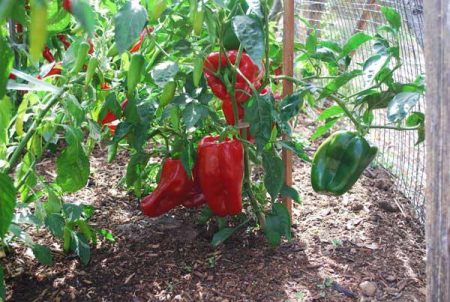
Harvesting mid-season varieties of pepper is carried out after 120-135 days after the appearance of the first seedlings. Most are for outdoor use. But it does not hurt to take care of shelter, in case of a sharp change in weather. The most popular of them are as follows:
- California miracle. Bushes up to 75 cm, with a meter of kV with sufficient care give up to 10 kg. Cubic fleshy peppers. The weight of one fruit is 160-170 gr. Wall thickness 7 mm. They tear them green, at home they ripen, becoming red.
- Red miracle. Harvested on 120-125 days after seedlings sprouts. As the ripening blush. Bushes of medium height, compact. The taste is very pleasant.
- Red spade. A great option for winter harvesting. Pepper weighing about 150 grams, juicy pulp, average wall thickness. About 5-6 kg comes out from a meter of kV.
- Alyosha Popovich. This pepper can be harvested 120 days after emergence. The bush is powerful, sprawling. Height is up to 70-80 cm. Fruits are medium fleshy, sweet, weigh about 170 gr. About 5 kg is collected from one meter of kV.
- Gift of Moldova. It is resistant to weather conditions. Bushes are low, up to 45 cm. With a meter of kV it turns out to collect up to 7 kg of crop.Ripen to 120-130 days after germination of seedlings.
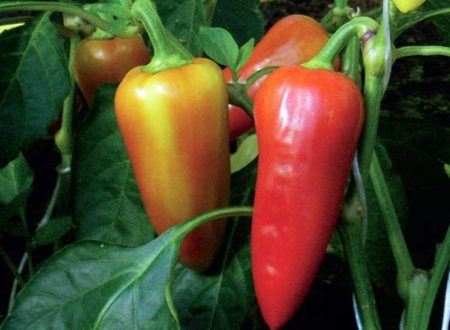
Severe weather conditions are not a reason to refuse to grow fresh vegetables. Correctly choose varieties, follow the rules of agricultural technology and you can easily get a generous harvest.




 Calorie pepper stuffed with meat and rice - BZHU per 100 grams
Calorie pepper stuffed with meat and rice - BZHU per 100 grams Gorky pepper - the best varieties for open ground
Gorky pepper - the best varieties for open ground Hot pepper seeds - the best varieties for open ground and reviews
Hot pepper seeds - the best varieties for open ground and reviews Capsicum tincture for hair - how to use and reviews
Capsicum tincture for hair - how to use and reviews